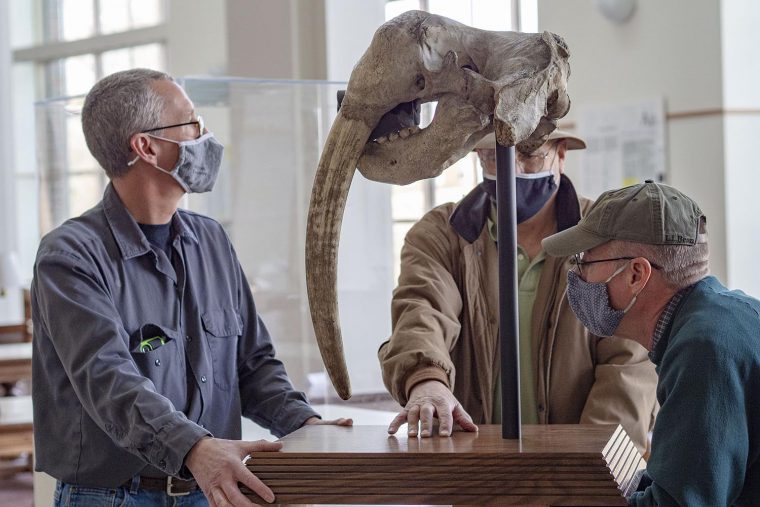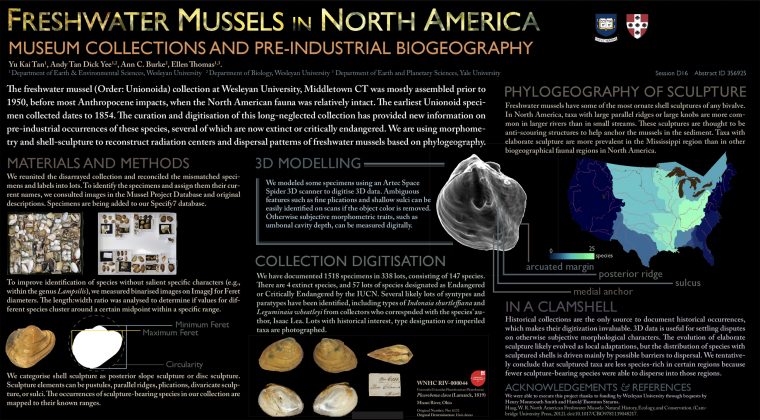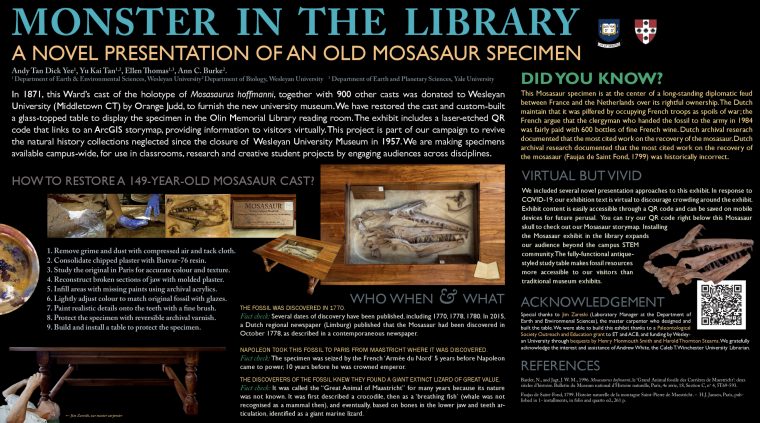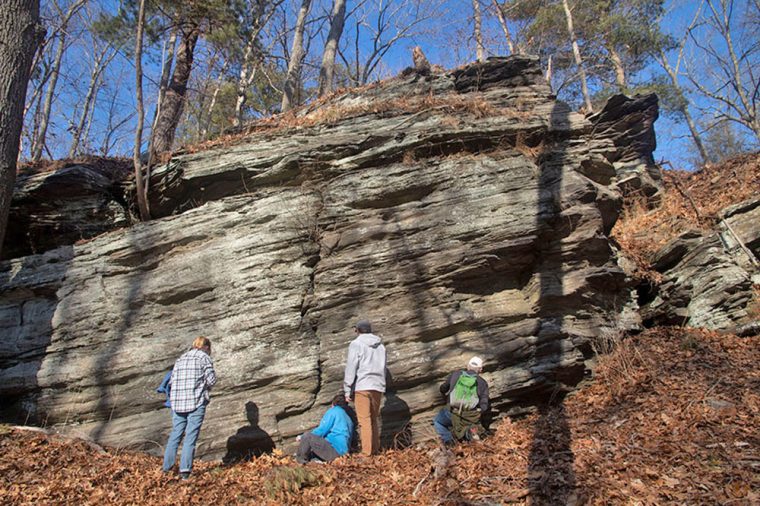Throughout the COVID-19 pandemic, the public has relied on dynamic visualizations in the form of maps and apps to keep up-to-date with the spread of the disease on both local and global scales. And with the use of geo-enabled apps, individuals can locate COVID-19 testing and vaccination sites, order groceries and other goods online, find uncrowded outdoor spaces, and track and even map the number of available medical resources in area hospitals. "All of these services are available due to geographic information systems (GIS)," said Kim Diver, associate professor of the practice in earth and environmental sciences. "By using spatiotemporal visualizations, we…
Rosemary Ostfeld '10, MA '12, visiting assistant professor of environmental studies and public policy, was named to Connecticut Magazine's 2021 "40 Under 40" list. The 32-year-old from East Lyme, Conn., is the founder of Healthy PlanEat, a new sustainable food-tech startup that helps farmers who use sustainable growing practices sell their farm-fresh goods (whether fruits or veggies, cheese or oysters) directly to local customers. Farmers using Healthy PlanEat—which enthusiastic members of the community helped start via a crowdfunding campaign—can upload inventory, set distribution options, and manage incoming orders. Customers can purchase food to pick up at the farms themselves, at…
Several Wesleyan faculty and alumni have been featured in national media outlets recently. They include: The New York Times—Life on Venus? The Picture Gets Cloudier; quotes Martha Gilmore The New York Times—Robert L. Herbert ['51], 91, Dies; Saw Impressionism With a Fresh Eye Transport Topics News—Democrat Ron Bloom '77, P'24 Named Postal Board Chair Amid Calls to Fire Louis DeJoy Stamford Advocate—Democrats: Impeachment Trial an Obligation ‘Whatever the Verdict’; quotes Justin Peck Hartford Courant—E.J. Dionne: Does Bipartisanship Matter More Than Helping Kids?; features Michael Bennet ’87 (more…)
Olin Library's newest resident is looking for a good book to sink his tusk into. The skull of a one-toothed walrus, which was installed in the Campbell Reading Room on Jan. 20, is the University's latest exhibit on display from the former Museum of Wesleyan University (1871–1957). The piece was donated to Wesleyan 145 years ago by the Smithsonian National Museum of Natural History but has spent about half of its university life in storage. The 26-pound skull, which is missing its right tusk, belonged to a Pacific walrus (Odobenus rosmarus divergens) living along the Ugashik River in Alaska in…
On Nov. 23, the Geological Society of America's (GSA) Geobiology and Geomicrobiology Division awarded earth and environmental sciences graduate student Yu Kai Tan '20 with a student presentation award. Tan presented his poster, "Freshwater Mussels in North America: Museum Collections and Pre-Industrial Biogeography," on Oct. 29 during the GSA's annual (virtual) meeting. Andy (Dick Yee) Tan '21 collaborated with Tan '20 on the poster. Their advisors are Ann Burke, professor of biology, and Ellen Thomas, Harold T. Stearns Professor of Integrative Sciences, Smith Curator of Paleontology of the Joe Webb Peoples Museum of Natural History, and University Professor in the…
For her exemplary contributions to research in the geological sciences and for being an instrumental mentor to young people of color, Professor Marty Gilmore received the 2020 Randolph W. “Bill” and Cecile T. Bromery Award from the Geological Society of America. Gilmore, George I. Seney Professor of Geology, professor of earth and environmental sciences, and co-coordinator of Wesleyan's Planetary Sciences program, was nominated for the award by Jim Head, the Louis and Elizabeth Scherck Distinguished Professor of Geological Sciences at Brown University. "Few individuals have done more for expanding diversity in the geosciences than Dr. Gilmore," Head said. She "leads…
Ellen Thomas, Harold T. Stearns Professor of Integrative Sciences, Smith Curator of Paleontology of the Joe Webb Peoples Museum of Natural History, and University Professor in the College of Integrative Sciences, is the recipient of the 2020 Joseph A. Cushman Award for Excellence in Foraminiferal Research. At Wesleyan, Thomas investigates oceanic benthic foraminifera (eukaryotic unicellular organisms) as proxies for the impact of changes in environment and climate on living organisms on various time scales. This fall, she's teaching the courses Research Frontiers in the Sciences and Mass Extinctions in the Oceans. Brian Huber, president of the Cushman Foundation for Foraminiferal…
Wesleyan students, graduate students, and recent alumni will present research posters during the annual Geological Society of America meeting Oct. 26–30. The virtual event will allow for a five-minute presentation followed by a five-minute period to answer questions. Earth and environmental sciences graduate student Yu Kai Tan '20 and Andy (Dick Yee) Tan '21 will present their poster, titled "Freshwater Mussels in North America: Museum Collections and Pre-Industrial Biogeography," at 5:15 p.m. Oct. 29. Their advisors are Ann Burke, professor of biology, and Ellen Thomas, Harold T. Stearns Professor of Integrative Sciences, Smith Curator of Paleontology of the Joe Webb…
As organisms evolve over time, changes in size—both miniaturization and gigantism—are a major theme. In fish, which are the specialty of Barry Chernoff, the Robert Schumann Professor of Environmental Studies, Professor of Biology and of Earth & Environmental Sciences, miniaturization happens in many lineages, though it’s not very common. Evolutionary biology has long held that this miniaturization is often accompanied by developmental simplification or paedomorphisis (becoming sexually mature while appearing juvenile-like). Last March, just before the pandemic began, Chernoff and students in his Tropical Ecology course (ENVS/Bio/E&ES 306) took a trip to the University of Michigan in Ann Arbor, Mich.,…
Martha Gilmore, George I. Seney Professor of Geology and professor of earth and environmental sciences, is prominently featured in a recently released suite of five documentary films about the history, science, exploration, and possible settlement of the planet Venus. In the films, Gilmore, who is co-coordinator of planetary science at Wesleyan, along with other experts in a range of fields, help to illuminate and elucidate the fascinating history and possible future of the second planet from the sun, commonly known as Earth's "sister planet." The suite of films was produced by filmmaker and space exploration advocate Dave Brody P '24.…
This spring, a group of five students enrolled in Wesleyan's Geologic Field Mapping service-learning class undertook a project to map the geology of Gillette Castle State Park and develop educational materials for the general public based on this map. The 184-acre park, which was purchased by the State of Connecticut in 1943, sits atop a hill overlooking the Connecticut River. Here American actor and playwright William Hooker Gillette, known for playing Sherlock Holmes on stage, built and lived on this estate from 1919–1937. His 14,000-square-foot, fieldstone-faced mansion resembles a medieval castle, hence the park's namesake, Gillette Castle. The 'castle' is…
As part of the University's efforts to "activate campus," a third prehistoric creature has taken up residence at Wesleyan. The new Mosasaur exhibit is on permanent display inside Olin Library and is a collaboration of faculty, student, and staff efforts. Mosasaurus hoffmannii Mantell (Mosasaur), a marine lizard, lived in the oceans during the Late Cretaceous period (66 to 68 million years ago) when the last dinosaurs walked the Earth. Mosasaurs had long, snake-like bodies with paddle-like limbs and flattened tails. Some specimens grew to be more than 50 feet long. In 1871, chemist Orange Judd of the Wesleyan Class of…










